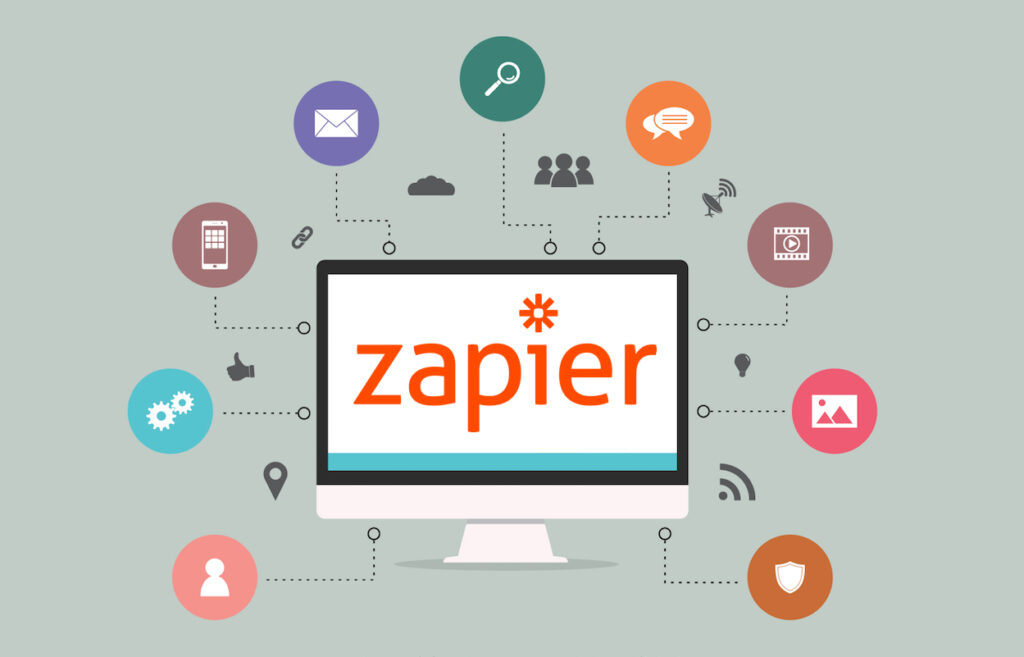Zapier is an online automation tool that connects your favourite apps, such as Gmail, Slack, Mailchimp, and over 1,500 more. It offers a wide range of benefits and features to help you automate tasks and increase productivity.
How Zapier Works
To get started with Zapier, you simply need to create a Zap, which is a workflow that connects two or more apps to automate tasks. A Zap consists of a trigger, which is an event that occurs in one app, and an action, which is a corresponding event that occurs in another app. Zapier can be used to create automated workflows that incorporate TinyTask, allowing users to automate tasks such as data entry, form filling, and repetitive keystrokes, while also integrating with other apps and services. This integration can save users time and increase efficiency, freeing up time for more important tasks.
For example, you could create a Zap that sends a Slack notification when a new lead is added to your CRM or a Zap that adds new email attachments to your Google Drive. The possibilities are endless, and Zapier offers a wide range of integrations to help you connect your favourite apps.
Benefits of Zapier
Zapier offers many benefits to help you streamline your workflows and boost productivity. Some of the key benefits include:
- Saves time: By automating repetitive tasks, Zapier frees up your time for more important things.
- Increases productivity: With automated workflows, you can get more done in less time.
- Reduces errors: Automating tasks reduces the chance of human error.
- Integrates with many apps: Zapier integrates with over 1,500 apps, so you can connect your favourite tools.
- Easy to use: Zapier is user-friendly and requires no coding experience.
Zapier Alternatives
While Zapier is a popular automation tool, there are alternatives to consider. Some of the most popular Zapier alternatives include IFTTT, Microsoft Power Automate, and Automate.io.
Each of these tools offers unique features and benefits, so it’s worth exploring your options to find the best fit for your needs.
Getting Started with Zapier
To get started with Zapier, simply create an account and explore the available integrations. You can create a free account to try out the basic features or upgrade to a paid plan for more advanced features and integrations.
Zapier also offers extensive documentation and support to help you get started and troubleshoot any issues. This includes a knowledge base, video tutorials, and a community forum where you can ask questions and share tips and best practices.
Key Features of Zapier
Zapier offers a wide range of features to help you automate your workflows and increase productivity. Some of the key features include:
- Multi-step Zaps: Create workflows that involve multiple steps and actions, such as sending an email and creating a task in your project management app.
- Conditional Logic: Set up rules to determine when a Zap should or should not run based on certain criteria, such as the content of an email or the status of a task.
- Filter and Formatter: Use filters for matters to manipulate the data that is passed between apps in your Zaps, such as extracting specific information from an email or reformatting dates.
- Paths: Create multiple paths in your Zaps to handle different outcomes or scenarios, such as sending a different email based on whether a lead is a new or existing customer.
- Team Collaboration: Collaborate with your team by sharing Zaps and workflows, assigning roles and permissions, and tracking activity and usage.
Use Cases for Zapier
Zapier can be used for a wide range of use cases and workflows, from automating marketing campaigns to managing customer data and streamlining project management. Some of the most common use cases include:
- Email Automation: Set up Zaps to automatically send and receive emails, such as sending a welcome email to new subscribers or forwarding emails to a specific team member.
- Social Media Management: Automate social media tasks, such as scheduling posts. Monitoring mentions, and tracking analytics.
- Lead Management: Automate lead capture and management, such as adding new leads to your CRM. Sending follow-up emails, and assigning tasks to your sales team.
- Project Management: Automate project tasks and workflows, such as creating tasks in your project management app, sending status updates, and assigning team members to tasks.
- Customer Support: Automate customer support tasks, such as responding to support tickets, sending follow-up emails, and tracking customer feedback.
Zapier Pricing
Zapier offers a range of pricing plans to fit different needs and budgets. The plans are based on the number of Zaps and tasks. You can run per month, as well as the number of app integrations you can use. The plans include:
- Free: Includes up to 5 Zaps and 100 tasks per month, with basic app integrations and limited features.
- Starter: Starts at $19.99 per month and includes up to 20 Zaps and 3,000 tasks per month, with advanced app integrations and features.
- Professional: Starts at $49.99 per month and includes up to 50 Zaps and 15,000 tasks per month, with more advanced features and support.
- Team: Starts at $299 per month and includes up to 200 Zaps and 50,000 tasks per month. With team collaboration features and advanced security and support.
Also Read: 6 Reasons Why Websites Crash – Growth Driven
Conclusion
Overall, Zapier is a powerful and versatile automation tool that can benefit individuals and teams across many industries and use cases. Its ease of use, broad app integrations, and flexible pricing plans make. It is an appealing option for those looking to streamline their workflows and boost productivity. Whether you’re looking to automate email marketing campaigns, manage customer data, or streamline project management workflows. Zapier has the tools and features you need to succeed.




